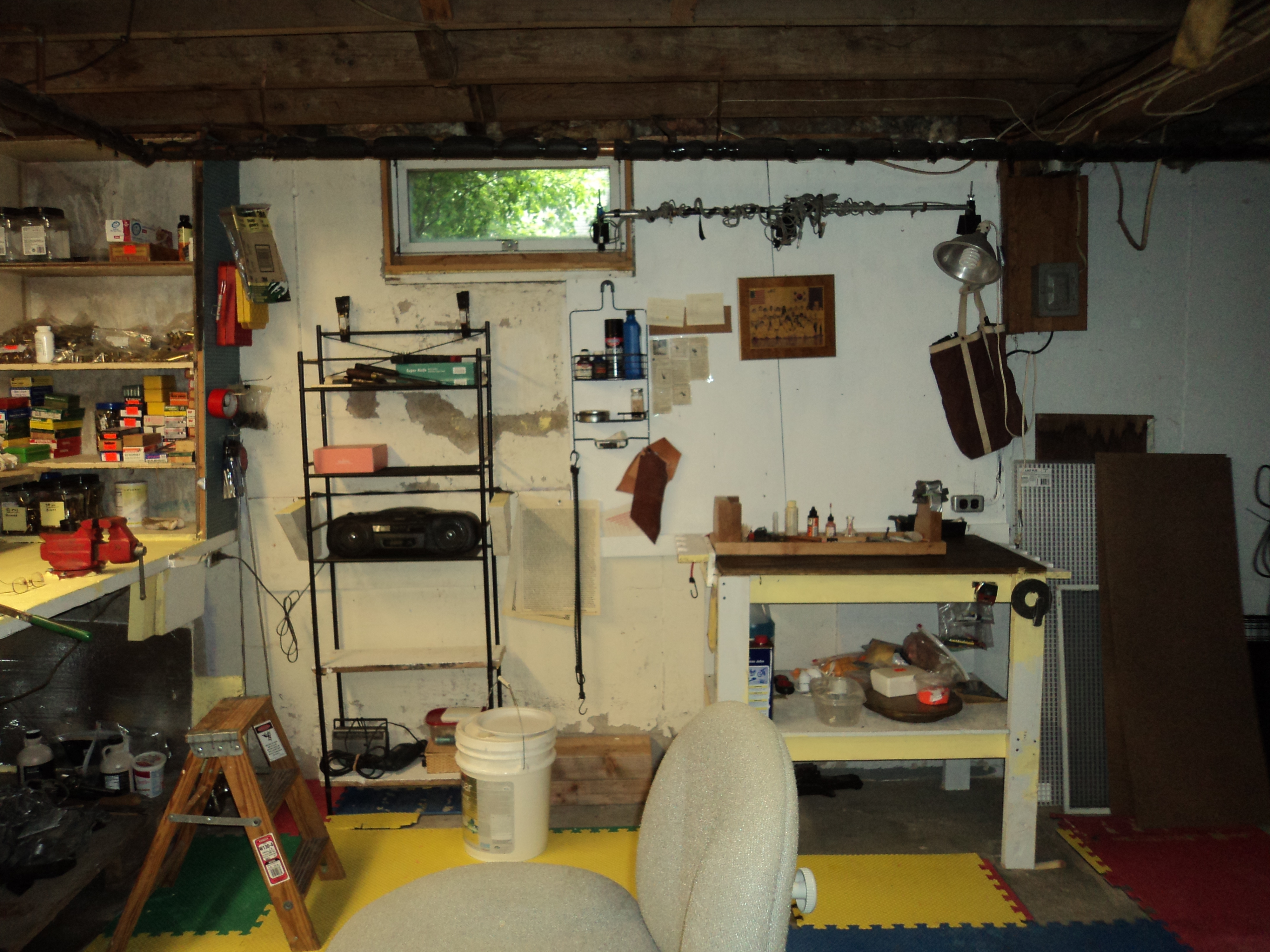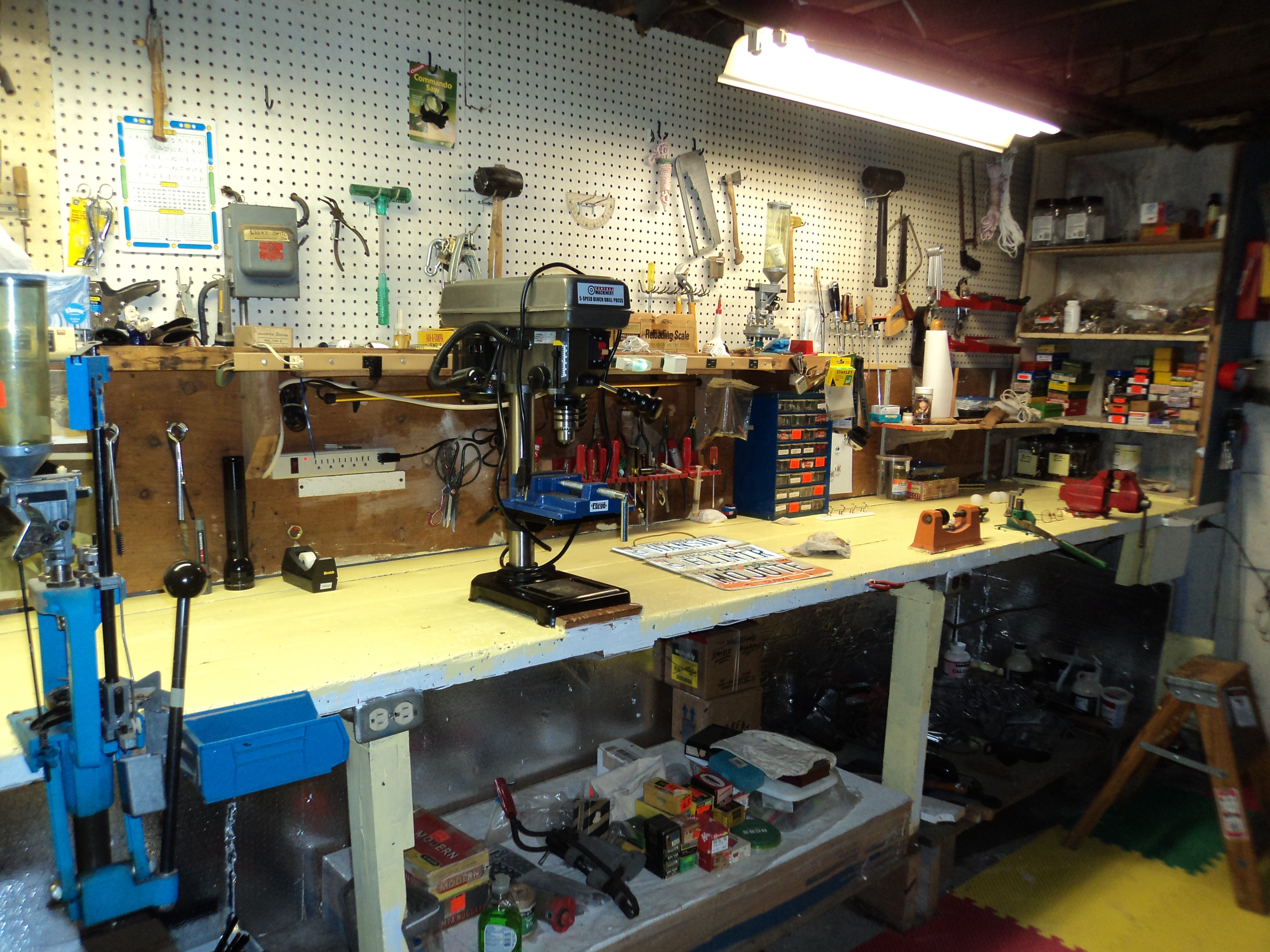I am into totally disassembling it. And I submerge the breach in hot soapy water and pump away with a cleaning Jag followed by some dry patches and WD-40 to chase the moisture away. I will soak the lock in the same bucket and use a toothbrush on it followed by the same WD-40 treatment . I always have a cigar and some Crown Royal to make the whole experience relaxing. I would love to hear what some of the more experienced guys do.
Cleaning goes pretty quick.
I go into the shop and fire up the steamer to get it to warm up. It's filled with distilled water for the season.
Then I go and slap it down in the workbench I made which holds and - felt lined cradles - protects it while I tap the barrel pins out, remove the barrel and remove the lock. The workbench has routed grooves to hold each part in it place wrt where it was removed from the gun so each will go back where it came from. The picture (01) shows the workbench as I completed making it years go.
Then I take the barrel over to my "Parks" bike clamp (I made the stand for it) and clamp the barrel in it with muzzle angled down. I had to modify the clamp as the stock plastic jaw protectors would melt. Initially I use a shop rag, later a slit rad hose and eventually I cast my own silicone duplicates. The picture (02) shows the workbench on the left the bike/barrel clamp in the center and the steamer on the right. Picture (03) shows a silicone jaw protector next to the original plastic version on the right. I made the stand for the steamer. It's on 5" swivel casters and can be wheeled around effortlessly. It holds all the steam wands, cleaning rods, jags, tools oils, cleaners etc, in the middle are the protective gloves and gun screwdrivers. Picture (04) is a detail of the steamer stand wands & rods. Picture (05) is a detail of the gloves & screwdrivers below.
So after I clamp the barrel I put on the gloves and the long steam wand and in 3-4 passes the barrel, blind breach & touchhole are spotless. I run a cleaning patch to confirm it's virgin white then another with bore butter on the inside (it's hot and a bit sloppy as it melts and soaks). Then I do the inside and outside of the lock then spray it with oil. Being hot the oil soaks into everything. I then, after killing the steamer, wipe the barrel exterior with oil. This sound long but it all goes extremely quickly
After this it's back to the workbench for reassembly and another general overall wipe down with oil and wiping off the wood.
From here it goes back into the Butternut case I made for it. Picture (06) shows the exterior. Picture (07) shows a bit of the interior. You can't see much down inside but I have tools etc that I keep with the case even though I generally don't use them, as you can see. Picture (08) shows a cleaning tool set and in front a board for rolling your own cartridges. These sit down at the muzzle end. In the middle bottom, picture (09), there's a set for shooting (flints, patches etc) and beside that, picture (10), a board with an iron cradle which secures the powder horn.
Net-net, whatever you do, if you get your set-up together you can do a very good job and it can go very fast and effortlessly. All of this (woodwork, ironwork, stencils, rope-work) I designed built/forged with authentic materials including hemp rope knot-work. I had a lot of fun making all the above items (isn't that the point) and they have served me very well over the years.
...oh, yes, a single malt whisky helps too!


















